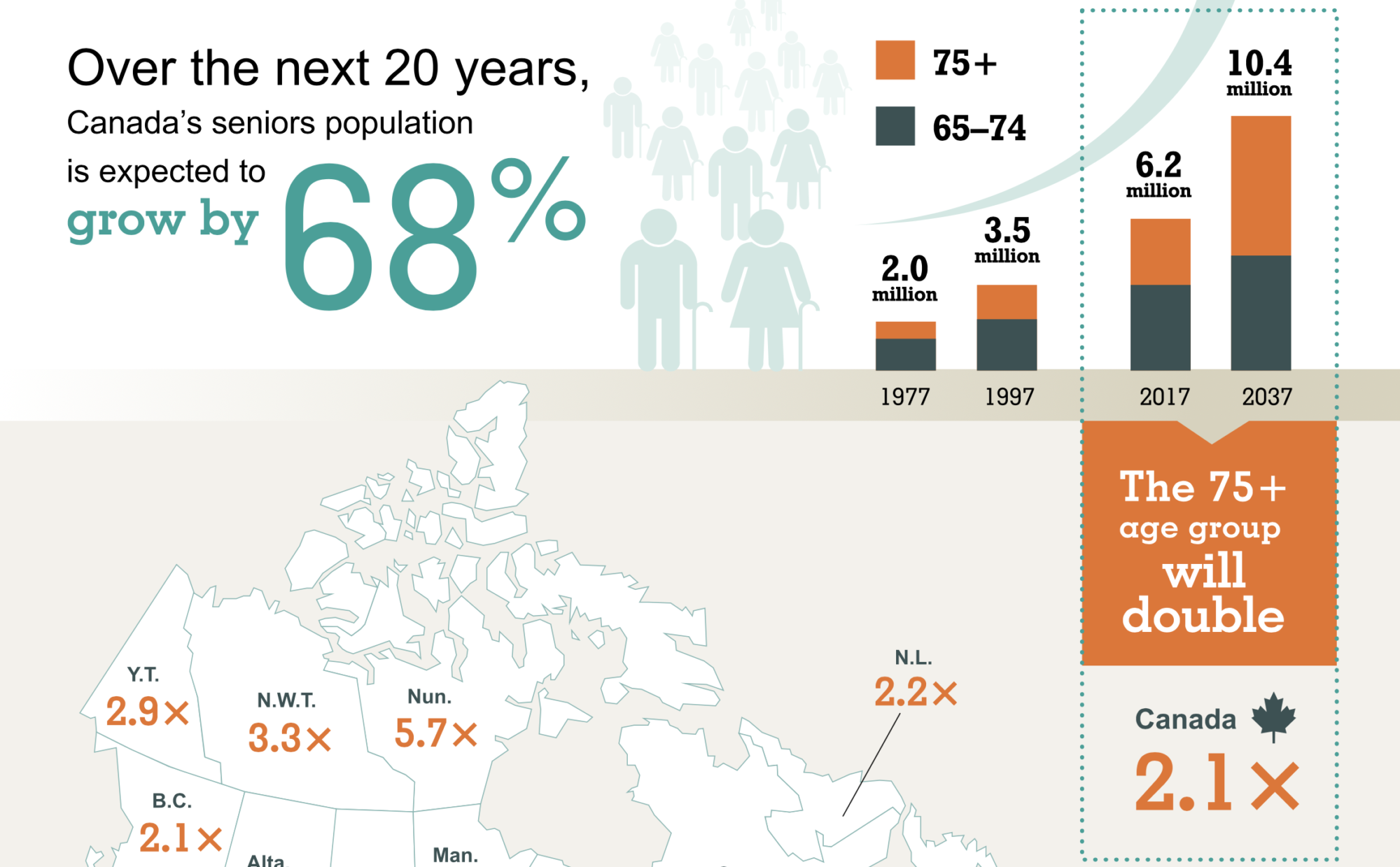Rather than allowing our healthcare system to buckle under the weight of surging demand, Canada’s next government must immediately implement reforms to our immigration system
As Canadians go to the polls again to choose a government, we see precious little time on the hustings has been devoted to discussing our aging demographic and what it means for our way of life.
The challenges and opportunities of an aging society may not have prompted much political debate, but we are beyond the point where we can ignore the greying of almost every community across Canada. History shows that a country that cannot maintain its population base is destined to become poorer and less capable of caring for its own.

A multitude of Canadian family caregivers — most often middle-aged women in the workforce — are already struggling to balance demands on their time with the needs of an aging relative. The professional care they depend upon for an elderly mom or dad is often in short supply, or simply not available. Situations like these will only worsen by the end of the decade when there will be not enough people to provide care for the aging “baby boom” generation.
According to a report published last year by RBC Thought Leadership titled Navigating the 2020s, Canada faces a pair of existential threats. One of them is human-induced climate change, for which all major parties have a robust campaign plank. On the other threat, however, all political parties are virtually silent on the demographic disruption caused by aging.
Rather than allowing our healthcare system to buckle under the weight of surging demand, Canada’s next government must immediately implement reforms to our immigration system. The RBC report calls immigration a “powerful antidote” to counter the greying population. It could also save our healthcare system.
When COVID-19 took hold last year, we witnessed how care at the bedside suffered as many of our essential front-line healthcare workers either fell ill or left their workplaces due to uncertainty over their health and safety. Labour shortages have been a longstanding issue, but never have we seen such devastating consequences as we did in our long-term care homes.
Some postulated as to why this important and under-appreciated part of our healthcare sector could not find staff. Those within the sector, however, understood how the pandemic simply amplified an awareness of the pre-existing labour shortage problem across Canada.
The slowing growth of our labour force is something that analysts have seen coming for years. For local, provincial, and federal governments it will require meeting the needs of an increasing number of older Canadians, resulting in higher government spending.
In Canada, those over age 65 make up 15.6 per cent of the population, a figure that will balloon to 23 per cent by 2030. Even with today’s 65+ population, Canada’s worker-to-senior ratio (four long-term care workers per 100 individuals) falls below the OECD average.
By the end of the decade, caring for seniors is forecasted to consume 55 per cent of provincial and territorial healthcare budgets in 2030 versus 45 per cent today. As Canadians live longer, the prevalence of dementia and the need for complex care grows as well. It will require a significantly larger and better trained workforce just to keep pace with the demand.
There will be about 650,000 people living in Canadian seniors’ residences or nursing homes in 2030, compared to 450,000 today. This staggering increase of 44 per cent does not include the majority who will receive care at home.
Even prior to COVID-19, the Canadian government projected demand for over 175,000 new Personal Support Workers within 10 years — a one-third increase in that workforce alone.
These figures are daunting, but there is an opportunity available for whomever forms the next government.
Reforms are already underway, for example, to overhaul the “Skill Level” structure by which immigrants seeking to work in Canada are selected. Last November, a new categorization was established to represent the degree of Training, Education, Experience and Responsibilities (a.k.a. TEER) required for an occupation.
With the new TEER system, pathways to permanent residency for the kinds of workers the healthcare system desperately needs — such as PSWs and nurses — are easier to achieve. Improvements must also be made to hasten the credentials recognition of internationally educated nurses.
Just as all levels of government and businesses in Canada must meet climate change head on, so will public and private enterprise have to invest in a well-trained healthcare workforce capable of caring for a much larger population of older adults. To not do both is to put our country at risk, something no new government can afford to do.
Terry Lake is CEO of B.C. Care Providers Association and EngAge B.C. and a former provincial Minister of Health. Feature image adapted from CIHI. Op-ed originally published in Vancouver Sun.




